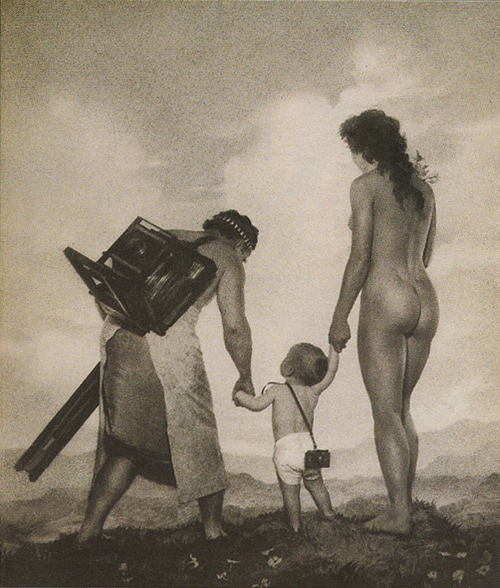Photo Corners headlinesarchivemikepasini.com
![]()
A S C R A P B O O K O F S O L U T I O N S F O R T H E P H O T O G R A P H E R
![]()
Enhancing the enjoyment of taking pictures with news that matters, features that entertain and images that delight. Published frequently.
Matinee: 'Celluloid Babylon: William Mortensen'



27 April 2019
Saturday matinees long ago let us escape from the ordinary world to the island of the Swiss Family Robinson or the mutinous decks of the Bounty. Why not, we thought, escape the usual fare here with Saturday matinees of our favorite photography films?
So we're pleased to present the 289th in our series of Saturday matinees today: Celluloid Babylon: The Visionary Photographs of William Mortensen in the Silent Film Era.
That long title is the name of an art exhibition curated by Brian Chidester that features a selection of Mortensen's images from the 1920s. At the time, Mortensen was a costume designer and set photographer for the silent movies in Hollywood. He subsequently left the movie industry, moving to Laguna Beach to open the William Mortensen School of Photography.
Along the way, he wrote nine books on photographic technique including Monsters & Madonnas, which featured 20 of his images and how they were made.
"Through technique," he wrote in that book, "the mechanical is bent to the needs of the creative. In this sense of the word, most photographers completely lack technique. Many have acquired mechanical skill, some have creative ability; but few have managed to bridge the gap between the two."
His second book, The Command to Look includes a series of lessons for obtaining "pictorial impact." He writes, "The picture must command you look at it... It is this quality that I have designated as 'the pictorial imperative.'"
His debut article in Camera Craft on projection control (printing with an enlarger) "created a sensation in photographic circles," the editors wrote and he agreed to write a series of article for the publication.
Those articles, which trumpeted Pictorialism in pieces like An Essay on Creative Pictorialism, ruffled the feathers of members of Group f64, which championed a quite different aesthetic. Ansel Adams himself conducted a long debate with Mortensen about it in those pages.
The sun, however, set on Mortensen, like it did on Pictorialism, while it rose on Adams and his "straight photography." Today Mortensen is little known, Adams like North on the compass of photography.
But Stephen Romano, who provided the images by Mortensen in this video, took up Mortensen's cause, spending 20 years recovering as much of the artist's work as he could.
The William Mortensen Exhibit Web page describes the exhibit that is the subject of this video:
By juxtaposing key images from the artist's private oeuvre with lobby cards photographed by Mortensen himself (as well as archival masks and other set pieces), the viewer is treated to a smattering of strange, fantasy worlds which document the dawn of Hollywood culture and capture one of the more unique perspectives from within it.
At the end of his essay Monsters and Madonnas: Looking at William Mortensen, Cary Loren includes Venus and Vulcan, a sepia print by Mortensen that portrays three characters. Loren describes the scene:
Vulcan is the god of fire and the forge. Here he is old and bent over, nearly crushed by the weight of his enormous box camera. He holds the hand of his cupid progeny (son of the Leica) and with Venus together they walk into paradise.

William Mortensen. Venus and Vulcan.
Cupid does indeed have a Leica strapped to his shoulder rather than a quiver of arrows. And Vulcan does bend over him, carrying a tripod with a large view camera strapped to his back.
Venus waits patiently for both of them, though.